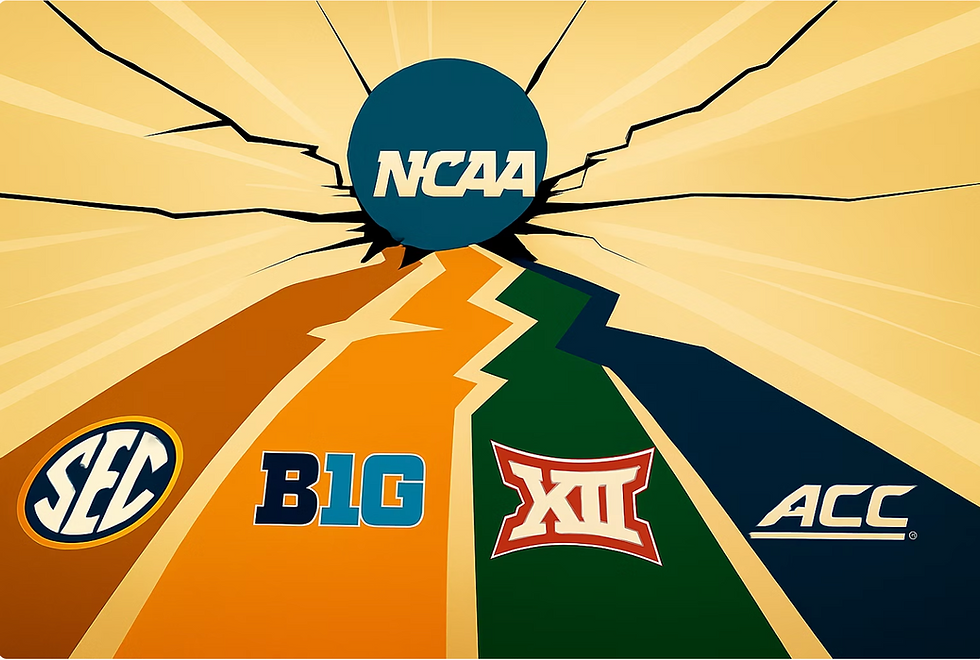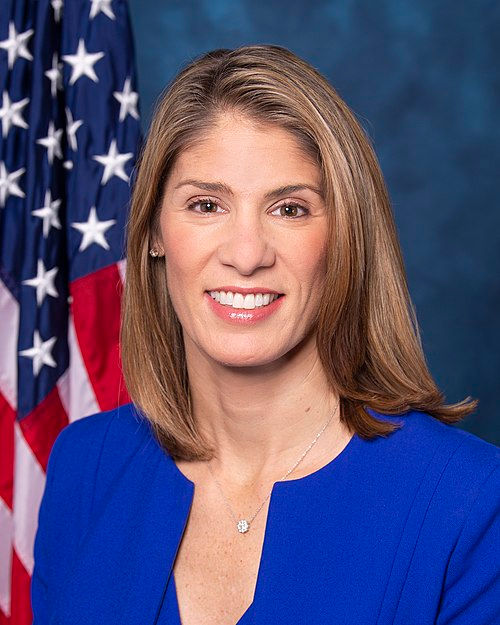The Power 4 Are Done Waiting
- Jason Meyer
- May 27
- 3 min read

Things are likely to get very messy, very soon—please, Judge Wilken, finalize your ruling.
SEC Commissioner Greg Sankey just threw gasoline on an already simmering fire this week when he suggested something a lot of people have been whispering: maybe the SEC—and probably the rest of the Power 4—doesn’t need the NCAA anymore.
Speaking on an NCAA governance proposal, Sankey made a pretty damning statement about where college sports is headed. He said that people inside the SEC have openly questioned why the conference is still part of the NCAA at all. He also made it clear the SEC wants “more autonomy” for all four Power conferences. He admitted he doesn’t have full authority to break away, but the willingness is clearly there.
This is exactly what we've been predicting: that if any big, structural change was going to happen, it would be driven by the Power 4. They already work together on TV deals. They already run their own version of a College Football Playoff. And they know how to maximize value for their schools. So, no—these aren’t hollow threats from Sankey.
Behind the scenes, these leaders are talking to private equity firms, wealthy donors, outside consultants—you name it. Everyone knows there's more money on the table. The only thing that’s been missing is the catalyst. And now, with the House v. NCAA case heating up, that spark is likely here.
With reports suggesting that each Power 4 school could be on the hook for around $20 million per year in athlete revenue sharing, athletic departments are in full-on scramble mode. They're combing through their budgets to figure out where this money is going to come from. Sure, Ohio State might bring in close to $250 million in revenue, but they also report losses in the tens of millions. They’re paying massive coaching salaries, upgrading facilities, and supporting Olympic sports and non-revenue athletes all at once.
So now, athletic directors are stuck. Many of them truly care about doing right by their athletes and keeping their departments sustainable. But those two goals are increasingly hard to balance. We’re already hearing rumors: staff cuts, paused capital projects, and now—most importantly—conversations about finding new revenue.
Because if they don’t want to slash teams or lay off people, that money has to come from somewhere. And more and more, the Power 4 is starting to say out loud what they've been thinking for years: Why are we still tethered to the NCAA?
Why should they carry the weight of the rest of Division I? Why prop up schools that don’t generate nearly as much, when they could break off, build their own structure, negotiate bigger TV deals, guarantee marquee matchups every week, and ultimately bring in even more revenue? Revenue that would allow them to pay players, keep staff, and protect non-revenue sports.
It just makes sense.
[Insert obligatory note here about how the NCAA had 30 years to get ahead of this and chose instead to bury its head in the sand.]
There’s no clean, easy way out of this. But change is coming, whether people are ready or not. We think the Power 4 is going to lead the way, and Sankey’s comments confirm they’re seriously considering it.
Yes, a Power 4 breakaway might feel like a bad thing at first. But it may be the necessary disruption to force the rest of the ecosystem to organize and respond. Ideally, this sparks a counter-move—one that includes all stakeholders and builds a system that’s fairer, more sustainable, and future-proof.
The Power 4 may not just want change anymore—they may be ready to force it.



Comments